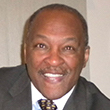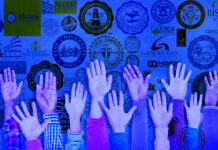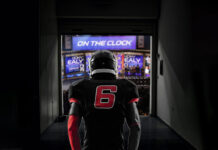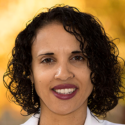by Al-Tony Gilmore
 Dr. Al-Tony Gilmore, a Distinguished Historian Emeritus of the National Education Association, has researched, lectured, and published widely on the intersection of sports and society, including his seminal book, Bad Nigger: The National Impact of Jack Johnson (Associated Faculty Press, 1975). He has been a history professor at Howard University, the University of Maryland, and a Visiting Scholar at George Washington University. In this new commentary, Dr. Gilmore discusses recent controversial police stops of buses carrying HBCU students in the historical context of “traveling while Black.”
Dr. Al-Tony Gilmore, a Distinguished Historian Emeritus of the National Education Association, has researched, lectured, and published widely on the intersection of sports and society, including his seminal book, Bad Nigger: The National Impact of Jack Johnson (Associated Faculty Press, 1975). He has been a history professor at Howard University, the University of Maryland, and a Visiting Scholar at George Washington University. In this new commentary, Dr. Gilmore discusses recent controversial police stops of buses carrying HBCU students in the historical context of “traveling while Black.”Racial profiling of Blacks by policemen is not a new problem, though the nomenclature and practice have evolved over time. It has deep roots in American history. The recent disturbing incidents and public uproar involving students of Delaware State University and Shaw University are illustrations of what may be called the “changing same.” Some things are old and some things are new, some things are common and some things uncommon, but when the patterns are cut from the same cloth, it is instructive to analyze them as a whole and not as artificially separated parts. It is a fact that HBCU students and staff have no exemptions from the indignities inflicted upon Blacks in the larger society, especially when traveling.
On April 20, 2022, the Delaware State University (DSU) women’s lacrosse team was traveling in a chartered bus on I-95 in Liberty County, Georgia returning from a game in Florida. The bus was stopped by Liberty County police and the duly licensed driver was told he was improperly driving in the left lane. The driver did not dispute the infraction but explained he thought it applied to trucks and not buses. Within minutes, White deputies came aboard the motorcoach and saw the passengers were female student athletes and their coaches, most of whom were Black, as the driver had explained. On a video taken by a DSU player, an officer is shown saying, “If there is anything in ya’lls luggage, we’re probably going to find it, OK? I’m not looking for a little bit of marijuana but I’m pretty sure you guys’ chaperones are probably gonna be disappointed in you if we find any.” The deputies then proceeded to remove and place the luggage outside of the bus on the ground where narcotics-sniffing dogs went through their belongings for over a half hour. Finding nothing illegal, the bus was finally able to leave and the driver was not issued a citation.
When the incident was made public, the video went viral making news nationwide. After watching it, Delaware’s Governor John Carney said it was “upsetting, concerning and disappointing” but a part of “our country’s complicated history” which, unfortunately “occurs with sad regularity.” Both U.S. Senators from Delaware, Tom Carper and Chris Coons, and U.S. Representative Lisa Blunt Rochester issued a joint statement calling the incident “deeply disturbing.” Defending the White officers who stopped the bus, Liberty County Sheriff, Willam Bowman, who is Black, insisted he did not ” believe any racial profiling took place.” Other Georgians did not agree. ” The way it was handled, I don’t feel good about it,” said Al Williams, a member of the Georgia legislature, ” I have a problem with a search for a very simple traffic stop.”
On October 4, 2022, a group of 18 Shaw University students and two advisors were traveling to a conference in Atlanta on I-85 when its chartered bus was pulled over. The stop occurred in Spartanburg County, South Carolina, but the search was conducted by Cherokee County deputies as part of a week-long operation by the Spartanburg County Sheriff’s Office along with other agencies, to seize illegal contraband including narcotics, illegal weapons, and cash. The deputies who allege the bus was traveling in and out of traffic determined the violation was sufficient enough to warrant narcotics-sniffing dogs to search through the passengers’ luggage. They found nothing illegal and the bus was allowed to proceed to its destination. The driver was not cited with a violation.
This stop of HBCU students also became national news. Roy Cooper, the governor of North Carolina expressed “deep concern” and asked that the state’s public safety officials discuss the matter with their counterparts in South Carolina and express their concern. Five “deeply troubled” N.C. members of the U.S. House wrote to Merrick Garland, U.S. Attorney General, requesting an investigation of the unjustified search which left the students ” unnerved, confused, and humiliated.” Paulette Dillard, president of Shaw University, and Gerald Givens, president of the Raleigh, North Carolina NAACP, opined the students were racially profiled. “In a word, I am outraged,” President Dillard wrote in a statement. “This practice of targeting Black students is unacceptable and will not be ignored or tolerated.” In a press conference on November 21, she announced that Shaw University was filing an official complaint with the U.S. Department of Justice for an investigation into Title VI and Civil Rights Violations committed by the Spartanburg County and Cherokee County Sheriffs’ Offices.
In both bus stops a plausible case can be made that they were not racially motivated. The buses had no markings or signage denoting DSU or Shaw affiliation and the dark-tinted windows made viewing of the passengers inside difficult if not impossible. But it is what happened after the buses were stopped that is most disquieting. For minor traffic violations, White deputies entered both buses where they saw HBCU Black student passengers and coaches, and properly licensed bus drivers. Based on what they saw, a decision was made to search the buses with drug-sniffing canines. This makes it exceedingly difficult to claim that race – whether consciously or subconsciously – was not a factor in making those decisions. To frame it another way with a parallel perspective, if those buses were transporting White college students under identical circumstances and the traffic infractions were the same, there is an unavoidable question: would there have been a search for drugs?
Gretchen Sorin in her book, Driving While Black (Liveright, 2020) argues that many police departments and the officers themselves regard racial profiling as a “media invention.” Appreciably to the contrary, a wide range of research has conclusively found that Blacks when traveling in automobiles are stopped more frequently than Whites, although they are not more likely to commit traffic violations or be involved in traffic accidents more frequently than Whites. One geographic-specific study, conducted by John Lamberth of Temple University, found that police disproportionately stopped and searched the cars of Black drivers more than White drivers. His research found that while 15 percent of the speeders on the New Jersey Turnpike were Black, they comprised 35 percent of those stopped. In Maryland, his findings were similar, where 17.5 percent of the speeders were Black though 28.8 percent of the drivers stopped and 71.3 percent of the vehicles stopped belonged to Blacks. The Stanford Open Policing Project, the most comprehensive study of police traffic stops, has found that Blacks are about 20 percent more likely to be pulled over than Whites. There are no studies of buses being stopped and searched when occupied by Black passengers with Black drivers, but the two incidents of DSU and Shaw indicate a need for such data, because most HBCUs utilize buses for school travel.
There is an abundance of quantitative research on the negative interactions of Blacks with police, and not much has significantly changed since W.E.B. Du Bois published The Philadelphia Negro in 1899. Blacks, he observed, “are wrongfully suspected” by police and “arrested for less cause” which results in “many unsustained charges of crime . . . made against Negroes, and probably more in proportion than against other classes.” The mindset of many policemen and Americans that Blacks are more prone to criminal activity and therefore require more police surveillance and even citizen scrutiny for crime, does not and has not made distinctions between types of Blacks – whether found shopping in department stores, strolling through White and upscale neighborhoods, attending concerts and sporting events, walking and jogging in public parks, marching in public protests for civil and human rights, being in large crowds, standing in long voting lines, wearing certain Afro-centric hairstyles and clothing and, especially, when traveling in certain types of automobiles. Political affiliation, socioeconomic class, education levels, occupations, or geographical origins of Blacks do not make a difference to many Whites in authority who maintain prejudiced assumptions about the criminality of Blacks. This is not a new phenomenon. “The past is never dead, ” as William Faulkner has opined. ” It’s not even past.”
Traveling while Black has been historically hazardous, and no one grasped this reality better than Harriet Tubman, conductor of the Underground Railroad, who transported hundreds of enslaved human beings to locations where freedom prevailed. In fact, all Blacks traveling distances during slavery unaccompanied by Whites were almost certain to be detained and interrogated by White authorities pending proof they were not fugitive slaves. Following the Fugitive Slave Act of 1850, this bad situation became worse when it became common for free Negroes to be stopped by slave bounty hunters, when walking the streets or when traveling on trains and horse-drawn street cars, who invaded the free states in search of what they defined as “property.” Even “one drop” Blacks with phenotypical White features were not exempt from illegal seizure and detention as many fugitives, freed slaves, and born-free Blacks fit that racial profile.
After slavery, and before the invention of automobiles, the travails of traveling for Blacks shifted more from capture to harassment and humiliation, and was codified in the 1896 Plessy v. Ferguson Supreme Court decision. It made racial segregation legal in both intra and interstate public transportation. Slightly more than a decade earlier in 1882, the Biddle College football team of Charlotte (now Johnson C. Smith University) traveled the 42 miles to Salisbury, North Carolina, to play Livingstone College in the first HBCU intercollegiate football game. The team traveled by train and was not subjected to the Jim Crow restrictions of segregation. The same was true for the Fisk Jubilee Singers who toured the country by train more than any other HBCU student group of the nineteenth century. This, however, was not always the case and was beginning to change in the decade after Reconstruction. Ida Wells-Barnett was a student at Fisk University in 1884 and purchased a first-class train ticket from Memphis to Nashville, but the train crew forced her to move to a car designated for Blacks. She refused on principle, before being forcibly removed from the train. She sued the railroad and won, but the decision was overturned by the Tennessee Supreme Court. After the Plessy decision, as historian C. Vann Woodward underscored in his book, The Strange Career of Jim Crow, all of the ambiguities around travel changed.
By the turn of the century, HBCUs had transitioned from solely intramural sporting activity to regional intercollegiate athletic competition, primarily in the sports of baseball and football. By 1912 this gave rise to the founding of regional HBCU athletic conferences. Because of the sparse resources that HBCUs were able to allocate to athletics, one of the most important and practical considerations for conference affiliation was the close geographic proximity of member schools. This made the costs of team travel between schools easier and more economical since buses could be used to transport athletes. By the 1920s, many HBCUs had expanded their athletic programs to include the participation of women and the sports of tennis, track, and basketball, whose smaller team rosters dictated team travel in smaller van-type vehicles. When trains were used, the teams were banished to segregated coaches as were all other Black travelers. Athletic competition accounted for more scheduled travel involving HBCU students than any other school activities while traveling between home and campuses had its own set of difficulties arising from racial bigotry.
For example, in the summer of 1933 when accepted as a student by Tuskegee Institute, but short on funds for travel, writer Ralph Ellison rode to school as a hobo on the freight cars of trains from Oklahoma to Alabama. At that time he was well aware of the dangers of such travel and despaired for the Scottsboro Boys whose fateful trip on a freight train a year earlier had culminated in fraudulent charges of rape and hasty sentences of life in prison and death by the electric chair. But as Ellison’s award-winning biographer Lawrence Davis surmised, Ellison incorrectly assumed there was a “difference between himself, a successful scholarship student, and the country tough, poor uneducated ” Scottsboro Boys, and that ” his exceptionalism would differentiate him from the pack. He was wrong, White law officers made no such distinctions. Two hundred miles north of Tuskegee, two pistol-brandishing detectives rousted both Black and White hobos at night from the train but saved the violence for Ellison who was treated with cruelty. Badly beaten with blackjacks and gun butts afflicting severe head wounds, he dashed to refuge beneath a shed by the railroad tracks where he hid until the next morning when he could move on. What Ellison’s experience illustrates is that the experiences of HBCU students traveling from their homes to college campuses were fraught with the same dangers of Blacks traveling anywhere in America, and that neither class, education, achievement, or income could shield them from the consequences of their racial identity. There are no studies of the problems HBCU students encountered traveling from home to campus or for student events on other campuses and locations. The memoirs, recollections, family stories, anecdotes, and autobiographies of HBCU students and those who attended PWIs, however, are replete with these challenges.
Unlike trains, team travel by automobile, van, station wagon, or bus was no different for HBCUs than the travel of other law-abiding and non-traffic violating African American citizens. Neither was exempt from routine racial profiling and unjustified police stops, which were so common they rarely made news outside of the campuses. In efforts to minimize the potential violence, intimidation, and disruption which could result from police interactions, HBCU athletic teams from the 1920s through the civil rights movement practiced the politics of respectability and both coaches and team members dressed in suits and ties and women in business dress – or Sunday clothing – when traveling. Moreover, as an added layer of precaution and safety, team buses – chartered and school owned – were branded with highly visible signage of the name of the school, making them identifiable to policemen, hopefully making them less inclined to being pulled over for “nothing.” It was an appeal to the benefit of the doubt of policemen and evidenced by the HBCU demeanor and appearance which broke sharply from prevailing racial stereotypes. Other school-sponsored student group travel (conferences, debate competitions, singing clubs, etc.) abided by the politics of respectability for the same reasons; a cautious but unguaranteed insurance policy for safe and harrasment-free travel.
For football bowl games, and alumni and promoter-sponsored classic games – popular from the 1930s thru the 1950s – which were played at distant neutral sites in the large stadiums in urban locations such as New York, Chicago, Miami, Birmingham, Los Angeles, Detroit, Washington, D.C., and San Francisco, chartered train coaches or buses were used for travel, and Black hotels and other places of lodging which did not practice racial discrimination were reserved for accommodations. Air travel for HBCU athletic teams has never been the normal method of transportation and even today only a small number of schools in the Mid-Eastern Athletic Conference (MEAC) and the Southwestern Athletic Conference (SWAC ) – the only two NCAA HBCU Division I athletic conferences – use air travel for football and basketball, and in most instances, those travel arrangements are in the contracts of the “money games” with predominantly White institutions, who can afford those expenses. including sizable checks to HBCUs willing to play on-the-road games against vastly superior opponents. Recently Jackson State University, under the celebrity and leadership of Deion Sanders, entered a partnership with American Airlines as the official airline of Jackson State athletics for chartered travel to selected games. It is the first such collaboration of an HBCU with a major airline. It is unlikely that more than two or three of the nation’s HBCUs will be able to enter such partnerships with major airlines for student-athlete travel for regular season games, and buses and vans will continue to be the mode of transportation for the majority of money-strapped smaller programs.
During and in the aftermath of WWII, there were spirited hopes among Blacks that by joining the military and with many making the ultimate sacrifice in “making the world safe for democracy” there would be a lessening of race-based restrictions on their post-war lives. College students like Black activist Pauli Murray found this to be untrue when jailed in Virginia for refusing to give up her seat on a segregated bus. Black soldiers in uniform soon learned that in the South, Whites did not entertain any such ideas. Two examples are worth citing. In 1944 in Durham, North Carolina, a Black soldier in uniform, Booker T. Spicely, got into a heated exchange with a White local bus driver, who insisted that he give up his seat to White soldiers who entered the bus at a subsequent stop. The driver became so upset that when Spicely reached his stop and exited the bus, the driver also got off the bus and shot him dead at point-blank range. The driver maintained self-defense and was acquitted in 20 minutes by an all-White jury. Students at North Carolina College for Negroes at Durham protested the shooting and the decision.
In 1946 after being discharged from the army, Isaac Woodard boarded a Greyhound Lines bus at Camp Gordon in Augusta, Georgia en route to his home in Edenton, North Carolin. Outside of Augusta at a reststop, he got into an argument with the driver after the driver had grudgingly relented to his request to use the restroom. At the next stop in Batesburg, South Carolina, the driver, still steaming over the soldier having the temerity to argue with him word for word, called the local sheriff who came out and forcibly removed Woodard from the bus and proceeded to smash his eye sockets with a nightstick, permanently blinding him in both eyes. The incident so outraged President Harry S. Truman that he intervened and called for charges to be brought against the sheriff who was ultimately acquitted of all charges in a federal court by an all-White jury. Here again, police and White authorities made no distinction between Murray, a Black female college student, and the Black soldiers, nor would they have for any other Black citizen.
HBCU basketball, tennis, track, and non-revenue generating teams have smaller rosters and travel in smaller vehicles – unlike buses with restroom facilities – as do their school organizations, but during segregation, all were challenged by the perils of intra and interstate travel, especially in the South where most HBCUs are located. The Green Book was of little value to traveling teams and organizations except in the few places where they were housed in hotels, because for intercollegiate activities the host college campuses usually provided for food and lodging. Where the Green Book had absolutely no value, however, was in identifying White-owned gas stations which allowed Blacks to use restrooms. It also did not list the most cautious stretches of road travel for Blacks. Word of mouth based on experience developed its own network of such places and travel routes, but had its limitations when normal bodily functions had to be performed before reaching those few and far-between accommodating places. Service stations nationwide had no problem with the profits from selling gas to Blacks, though only in rare circumstances were Blacks allowed to use their segregated restroom facilities prior to the Civil Rights Act of 1964. When traveling with his track team in the 1950s to the Tuskegee Relays, Ed Temple , Hall of Fame coach of the celebrated Tennessee State University “Tigerbelles,” recalled the humiliation: ” We could not go to the restrooms, we had to pull over to the side of the road, and the girls had to hit the field.” Food also had to be prepared in advance of the trips, because ” we could not go to restaurants” in the South, and even when traveling to the Penn Relays in Philadelphia ” we got in a station wagon and we drove all the way . . . the only time we stopped was to get gas.”
What Temple wanted to avoid was for his student-athletes – who won 34 national titles and 23 Olympic medals – not to be treated as common criminals which had been the experience of Murray, Spicely, Woodard, and countless others. He knew that the student credentials of his team meant nothing to segregationist police, even when federal law made clear such practices were wrong. The Morgan v. Virginia Supreme Court decision of 1946 found that segregated bus seating was unconstitutional. In 1956 the court upheld a lower court ban on interstate bus segregation in South Carolina, and the 1960 Boynton v. Virginia decision ruled that segregation of interstate transportation facilities, including bus terminals, was unconstitutional. To test those decisions, the 1961 Freedom Riders were organized by the Congress of Racial Equality. Comprised of civil rights activists, both White and Black, and college students, most from HBCUs, the Freedom Riders boarded Greyhound buses and crisscrossed the South with the goal of integrating interstate buses and bus terminals. When the buses pulled into Southern cities, they received no useful police protection. The riders were treated no different than escaped convicts and were greeted by mobs armed with bats, firebombs, and weapons of violence and human destruction.
Bottom line, the forces of racism did not – and still do not – make exceptions and exemptions for the traveling of HBCU sports teams or for student organizational travel. In the end, no class of Blacks could then or can now fully escape the degradation and discomfiture of traveling Black for one reason or another. As Christopher Darden, a prosecutor in the O.J. Simpson case, has noted: ” It doesn’t make a difference who you are. You’re never beyond this, because of the color of your skin.”
By the mid-1970s, HBCU state school administrators with the support of Black state legislators and other Black elected officials, requested and received what had first been provided for the football teams of state PWIs beginning with Alabama’s coach Paul “Bear” Bryant in the 1960s. This was the practice of state policemen serving as a security detachment for the travel of the team, and for on-field protection of the coach from both angry and excessive fans, especially when leaving the field post-game for the locker rooms.
As early as the late 1970s, the South Carolina State University football team was accompanied inside of the school name-branded team bus by two officers of the State Law Enforcement Division, while two state troopers in marked police vehicles escorted the bus to its destination. The trips were coordinated with law enforcement officials and state departments of transportation in all states through which the bus traveled. With law enforcement officials serving as security buffers for the coaches and student athletes, this significantly reduced the prospects of the bus being stopped and the intimidating experience of unpleasant interactions with police. Such safety precautions could serve as guides for all HBCU student-authorized travel, but would be complicated and not cost-effective to implement for HBCUs that are not state institutions. And while such measures are not intended to be a solution for police racial profiling or misunderstood as compromises with racism, they make good sense as short-term remedies designed to protect Black lives and minimize stressful interactions with poorly trained and biased police officers.
It will take time for some police departments to better select police applicants, provide better in-service training, and to institute stiffer penalties for misconduct. In the interim, and to complement what Governor Cooper of North Carolina has suggested, HBCU officials should meet with law enforcement and state department of transportation officials to develop mutually approved travel arrangements and protocols for student travel. Black and other state and local elected officials in the states of HBCUs should encourage and participate in the dialogue. Among other considerations around which consensus might be reached would be: advance notification of student travel to all jurisdictions through which the students and coaches would travel; the names of those authorized for school travel; all school vehicles used for student travel be equipped with video cameras that are activated for all stops; and all vehicles for student transportation be clearly marked with signage of the school name. Of course, drivers of the vehicles would be held accountable for all traffic rules and regulations.
One size does not fit all, and this approach to assist Black college students with safe and secure school travel would be impractical and implausible to implement for other citizens traveling while Black, but who also need relief from discretionary police stops fueled by ingrained racial prejudices. For HBCUs, however, it is a place to start, and the sooner the better, less history repeats itself.












AlTony,
A profound article/statement which addresses in detail abuse and harassment by persons on color while traveling. I am thankful to see and appreciate how you were able to reflect back and relate till today how things have not really changed, You the Man! Vince Spaulding
The first reaction to the brilliant body of Work of Dr. Al Tony Gilmore on whatever the subject is ,He never disappoints!
This piece is in his traditional manner.
What he delivers, as here, is never a nakedly self -Opinionated piece.No, he respectfully and generously, gives the Reader a Master Class in how to educate, edify and provide a wealth of knowledge infused and anchored in his honed Craft of History in a style of elegance and writing.so accessible.
There are always things that sear the mind and spirit, like the direct line from enslaved Ancestors and our children just trying to get transported from one place to another in the 21st Century, or the brutalization of Ralph Ellison, considered by some as author of the best novel ever written on this soul.
But, until we as a People as he observes, are no longer criminalized by skin color, nothing else will matter.
And there should be no “qualifiers” beyond our humanity that should.afford our protection.
Congratulations Dr.Gilmore; you’ve done it again!
Dr. Gilmore,
Your work is greatly appreciated and recognized as recounting the long journey that has evolved. Unfortunately, there is a very long way to go before the views, opinions and actions of organizations, institutions and individuals recognize the concept of equality in their actions.
It is with efforts like yours and those of many others in many fields that we will achieve the goal of equality.
ELL
Dr Gilmore continues to provide supporting and informative content to the efforts to achieve equal recognition on all fronts including social, political and economic.
This particular effort addresses critical issues concerning public safety and wellbeing.
Edward Lipscomb
Once again Dr. Gilmore has broken down the intricacies and paradoxes that exist at the intersection of race, collegiate sports and the simple act of traveling to compete with other teams. He depicts in graphic detail the abhorrent inhumanity of some Whites toward innocent people of color. His assessment of the situation provides a gleamer of hope that one day all people will reject the notion of White supremacy and treat everyone with dignity and respect. It was well worth the read and is highly recommended for all critical thinkers.
Dr. Gilmore is my long time friend, NCCU classmate and fellow track team member. I have copies of all of his books and many of his articles. His writings always reveal historical facts and caveats of stories or events which I thought I was very knowledgeable about, that is, until I learn something new from his outstanding, exciting, engaging and spellbinding stories brought to life by his historical scholarship!! Tony’s article is a winner just like just like he was when he ran for the NCCU Track Team!!
EXCELLENT historically and contemporarily.
Fuzz